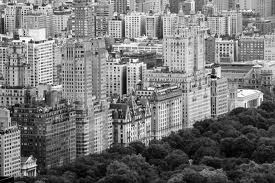A Christmas wander many decades ago on the then un-gentrified, rough-around-the-edges Upper West Side of New York City: With the kids well insulated against the cold, HG/BSK strolled north on Broadway. Passed Zabar’s, the temple of great smoked fish, bread and cheese. Much smaller then. Passed the New Yorker cinema (perpetually playing “The Sorrow and the Pity”). Passed The Symphony (then a movie house, not a performing arts center). Passed The Thalia (the tiny, eccentric movie theater that showed only the great classics–foreign and domestic). Passed the Senate Cafeteria (the place where Holocaust survivors drank endless cups of tea and provided habitué I.B. Singer–who relished the Senate tunafish salad–with material for his Nobel Prize-winning fictions). Passed the 96th Street newsstand (the best and busiest in New York). Arrived at the destination on 98th: The Great Shanghai Chinese Restaurant. Friends and their children were waiting. What a lovely way to spend a Christmas holiday late afternoon — gathered around a big round table with hungry pals devouring savory Chinese food. The Great Shanghai was large and loud, ruled by an imperious Chinese lady. The food was wonderful and the menu was both expansive and very inexpensive. The kids loved the dumplings and noodle dishes. The adults concentrated on the seafood — exceptional lobster, shrimp, scallop and crab dishes. Plus whole fish steamed with ginger, garlic and black beans or fried and topped with a fiery Szechuan sauce. After farewells, HG/BSK and the kids (who were anticipating dessert) picked up sweet good things at Babka Bakery on 79th and ice cream at adjacent Gourmet Treats. Yes, it was the Sixties and America was involved in domestic turmoil and bloody, wasteful war (So, what else is new?) but HG/BSK could put peace marching and civil rights activism aside and enjoy the delights of food and family.
Christmas Restaurant Nostalgia Part 5: Great Shanghai
December 20th, 2013 § 0 comments § permalink
The West Side Is (was) The Best Side
April 15th, 2013 § 0 comments § permalink
HG has written frequently about the food heaven that was the Upper West Side of Manhattan. Yes, Zabar’s, Murray’s and Barney Greengrass remain — temples of smoked fish and other delicious treats. But, in the days long before the UWS became fully gentrified there were scores of Mom-and-Pop shops, eccentric ethnic restaurants and corner greengrocers that defined the neighborhood’s culinary bent — all have disappeared, crushed by the real estate steam roller. When HG and BSK lived on the West Side during the 1960s and early 1970s the neighborhood was a bastion of rent control. Vast, affordable apartments were legion. Naturally, this attracted writers, artists, musicians, dancers, intellectuals, etc. The neighborhood had an edge. There were plenty of muggers and drug addicts. Petty larceny was the norm. Crazies, huddled in layers of clothing during the warmest weather, wandered the streets mumbling their interior monologues. At night, hookers appeared. There was a melancholy haze over the benches on Broadway where Holocaust survivors, often displaying their concentration camp tattoos, sat ringed in exhaust fumes and polluted sunshine. The great, Nobel Prize-winning author I.B. Singer, a small, pale man in a dark suit and fedora, would chat in Yiddish with these men and women (when he wasn’t feeding pigeons). Impecunious old European refugees favored the Senate Cafeteria on Broadway near 96th Street where they argued endlessly over cups of tea. HG and BSK lived in The Hereford, a moldering 12-story apartment house between West End Avenue and Riverside Drive (glorious views of the Hudson River and the New Jersey Palisades). The building was a repository of the arts. HG and BSK’s dear friend, the composer Michael Small lived with his wife, Lynn, on the fourth floor (HG and BSK lived on the lofty 12th). The Small’s apartment was unusual. Michael’s classmate at Williams College, Charles Gwathmey, the extraordinary architect, had ripped out walls in the apartment creating an exuberant space defined by his beautifully crafted cabinetry. Michael’s grand piano was at stage center. Peter Boyle, the actor (before jumping to fame in Young Frankenstein) lived in the building and joined HG and BSK at a Chinese cooking class. Ted Solotaroff, the visionary critic and editor (founder of The New American Review and lifelong friend of Philip Roth) became a pal of HG and BSK. Here’s a vignette of life at The Hereford: Early one evening Michael summoned HG and BSK to his apartment where he played some of his score to the film Klute (a hit with Jane Fonda as a call girl-in-peril). He went on to write the scores for many memorable films induing All The President’s Men and Marathon Man. After dinner we all went to a literary event at Ted Solotaroff’s apartment. Here, we heard Richard Howard, the poet and translator, read Robert Browning’s My Last Duchess. Memorable. Sadly, Small, Boyle, Gwathmey, Singer and Solotaroff are all gone. Richard Howard is still a figure in New York literary life. And HG continues to remember it all with great fondness.

